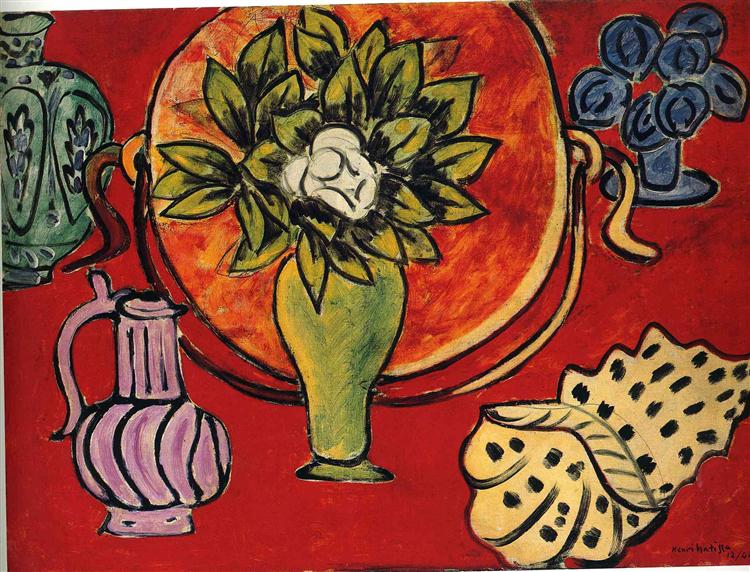Description
In the contemplation of "Still Life with a Magnolia" (1941) by Henri Matisse, one immerses oneself in a world of forms and colors that transcend the ordinary experience of the still life. This painting, with dimensions of 75x58 cm, marks a significant contribution in Matisse's vast artistic career, a painter who constantly sought new ways to express beauty and transcendence through painting.
The first aspect that captures attention is, without a doubt, the composition. Matisse organizes the elements of the work with a marked aesthetic sense, using the magnolia as a focal point in a carefully balanced arrangement. This focus on individual objects reflects his ability to transform the everyday into something extraordinary. The magnolia, in its elegant simplicity, stands at the center of the painting, attracting the viewer's gaze with its delicate white petals that contrast with the darker and more vibrant tones surrounding it.
The use of color in this painting is equally impressive. Matisse, known for his Fauvist style that celebrates intense and unnatural colors, employs here a controlled but powerful palette. The intense greens, yellows, and blues are in perfect harmony, creating a lively yet tranquil atmosphere. The boldness with which the artist applies the colors is one of his distinctive characteristics, and in "Still Life with a Magnolia," we see how this boldness translates into a vibrant juxtaposition of shadows and lights that bring the scene to life.
Unlike other compositions by Matisse that often include human figures, this work focuses exclusively on plant elements and inanimate objects. Nevertheless, the absence of characters does not detract from the painting's dynamism. Every component—from the table to the vase, to the leaves and fruit situated in the foreground—has been arranged in a way that communicates movement and vitality. The marked contours and the intentional use of form and structure give the work an almost sculptural quality.
Besides his technical prowess, Matisse brings a certain emotional depth to the still life. The representation of the magnolia is not merely botanical; it is a symbolic metamorphosis that captures the essence of life itself. By isolating and enlarging its botanical elements, Matisse invites the viewer to meditate on the fleeting beauty and persistence of nature.
In the context of his artistic production, "Still Life with a Magnolia" is inscribed in a period where Matisse was redefining his own method of work. This painting is contemporary to his series of works with paper cutouts and shows how his experiments with new techniques informed and enriched his pictorial thinking. Although predominantly known for his exuberant scenes and lively portraits, this still life underscores his versatility and deep commitment to pure art and the continuous exploration of form and color.
In summary, "Still Life with a Magnolia" by Henri Matisse is not only an exquisite example of still life; it is a revelation of the artist's genius, which through a masterful handling of composition and a vibrant color palette, continually invites the viewer to marvel at the beauty and complexity of the natural world. Here, the magnolia is more than a flower: it is a celebration of life in its most essential state and a testament to the visionary talent of one of the great masters of modern art.

